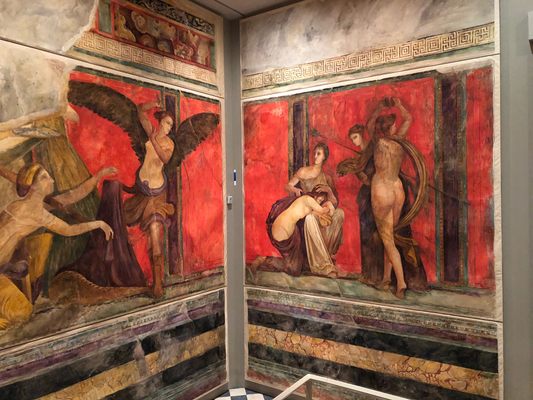About
In 1909, archaeologists excavating the city of Pompeii uncovered a Roman villa that still contained painted frescoes on the walls of one of its rooms. The artwork depicted the mystery rites of a religious cult associated with Dionysus. Images included scenes of women cavorting with fauns and winged figures, and undergoing ritual ecstasies, dancing, and flagellation. Researchers dubbed this dwelling the "Villa of the Mysteries."
In 1924, archaeologist Francis Kelsey commissioned Italian artist Maria Barosso to create a replica of the wall paintings. Using watercolors, Barosso painted 21 paper-on-canvas panels that could be fitted together to replicate the look of the room, including all the cracks, plaster flakes, and other imperfections that were present when the Villa was first excavated.
Kelsey intended to display the replica frescoes at the University of Michigan but passed away in 1927 before they arrived on campus. When the pieces did arrive at the school, they were put into storage in the archaeology museum that would come to bear Kelsey’s name. They remained there for decades, with individual panels brought out for educational purposes and two brief exhibitions.
In 2005, the museum received a sizable monetary donation that allowed them to build a special exhibit room to finally display all of Barosso’s villa paintings fully assembled. This allows visitors to experience some sense of what the frescoes would have looked like when archaeologists came upon them in the early 1900s.
Related Tags
Know Before You Go
Parking is available on the street or in the nearby Maynard Street Parking Structure. The museum is free, though donations are welcome.
Published
March 1, 2021




























